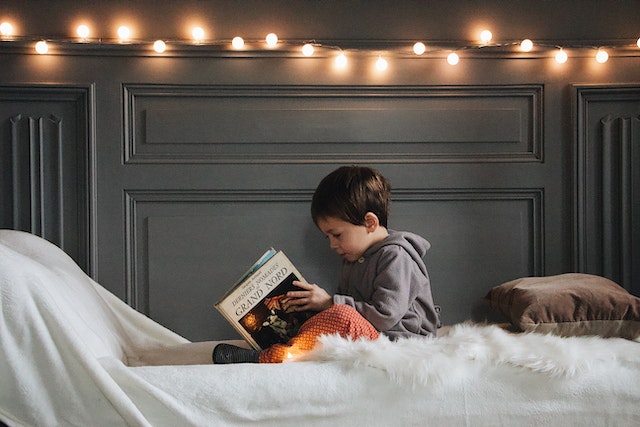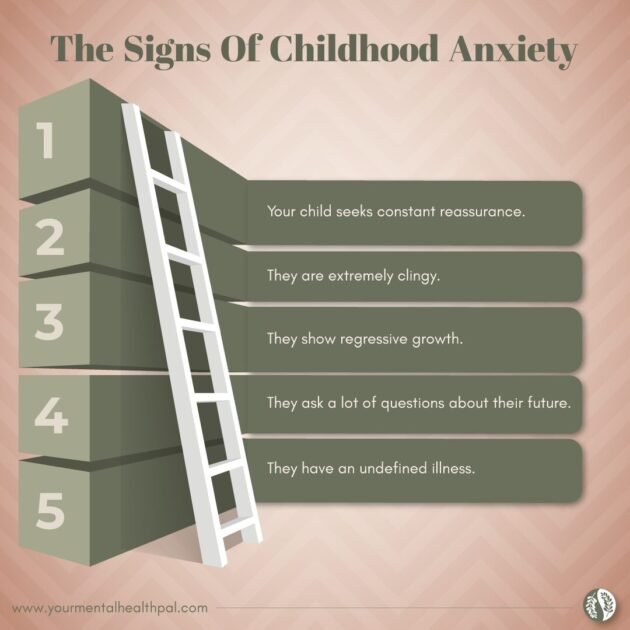Anxiety disorders are commonly associated with adulthood. After all, isn’t it the most stressful time of our lives? It is during this time that we have to deal with unending to-do lists, unforgiving deadlines, relationship issues, and the annoying dishwasher or dryer that keeps breaking down.
But while childhood might seem more carefree, it’s certainly not too far off from the shadow of anxiety disorders.
Childhood itself is a pretty anxious and stressful time to be in. From worrying about school and playtime to encounters with scary dogs, learning new things, and navigating a world that doesn’t really make much sense — being a child means having a lot on your small plate.
Given the amount of burden, it’s perfectly fine for children to fret and be anxious.
Anxiety, to a certain degree, can be good for children just like adults. It can activate their ‘flight or fight’ response and help them keep safe.
But sometimes, these fears and stressors can prove to be a lot and manifest as signs of childhood anxiety. Children can exhibit anxiety symptoms on a spectrum, and unfortunately, the relief and reassurance parents can provide to deal with these are limited.
Children are extremely sensitive to changes in the environment they live in. They can hear and feel things that we might overlook. They can pick on keywords from conversations or draw from your stress to develop anxiety. When children get stressed, it is almost impossible for them to function properly. Anxiety affects every part of their life.
This anxiety can manifest in the form of problematic behaviors like throwing tantrums, fights, and much more. As parents, you might be quick enough to notice these signs but won’t be able to deduce the reason behind them. Moreover, children at a young age don’t have a vocabulary developed enough to explain how they are feeling.
This is why learning about the signs of childhood anxiety is important. It allows you to understand how to spot the signs of anxiety in children and provide them with help and support whenever necessary.
To help you get started, we will dive into various signs of childhood anxiety. We will also discuss the different types of childhood anxiety disorders and their treatments. Let’s dive in.
What Are The Signs Of Childhood Anxiety?

As a parent, it’s extremely hard to differentiate between regular fretting and signs of anxiety in childhood.
For instance, it’s natural if your child is anxious the day before school reopens after a long summer break. You can learn to filter the signs of childhood anxiety by understanding how long the nerves usually last and how they affect your child.
For instance, while first-day nerves are acceptable, if the anxiousness extends beyond the first week and obstructs your child from learning and socializing, these might be signs of childhood anxiety.

Here’s a list of childhood anxiety disorder symptoms that parents usually miss:
1. Your child seeks constant reassurance.
It’s normal for children to be needy and constantly seek validation for their actions. But if your child repeatedly asks you to reassure them they are safe, it might be one of the signs of childhood anxiety.
These are the common questions they might ask:
- Am I going to be hurt?
- Am I going to be sick?
- Will I be okay here?
- Is something terrible going to happen?
Professionals generally club these under ‘what if’ questions. These questions are signs that your child’s mind is dwelling on or overthinking a fear or anxious thought.
2. They are extremely clingy.
Having a clingy child who refuses to leave your side can be pretty frustrating. But have you thought of it as one of the symptoms of childhood anxiety disorders?
As per research by the World Trade Center Attack, separation anxiety disorder (SAD) is one of the most common anxiety disorders in childhood after a traumatic event. Children who have SAD are usually extremely clingy and don’t want to leave the company of their parents or caregivers, even for small durations.
Therefore, this clinginess isn’t just because they miss people. It’s an indication of severe stress and anxiety.
3. They show regressive growth.
Regressive growth is generally tough on parents.
You might have spent days perfecting their sleep routine or getting them to learn how to use the toilet consistently, and then suddenly, you are back to square one. It’s pretty difficult to maintain your composure during such times (so remember to be more mindful).
Regressive behavior is one of the signs of childhood anxiety. As mentioned above, children are highly sensitive. Any abnormal or uncomfortable occurrence can leave them feeling disturbed. This way, it gets pretty difficult for them to stick to a proper routine.
4. They ask a lot of questions about their future.
Another one of the common symptoms of childhood anxiety disorders is when children frequently ask questions about their future.
Since children aren’t able to put to words their actual fears, they constantly try to ease their racing minds by asking questions about the future. If your child’s been asking many questions about what will happen next, take note.
5. They have an undefined illness.
Children don’t have a vast vocabulary to help you understand how they’re feeling. Therefore, they express their anxiety by pointing to a relatively undefined physical illness like stomach ache. These physical illnesses or pain that can’t be explained can be signs of childhood anxiety.
The physical signs of anxiety in childhood include the following:
- irritability,
- difficulty focusing,
- sleep and appetite changes,
- headaches,
- nausea, and
- increased fidgetiness.
What Are The Common Types Of Anxiety Disorders In Childhood?
1. Separation Anxiety Disorder (SAD)
SAD is one of the most common types of childhood anxiety disorders. When affected by this, children might feel extremely upset about moving away from parents or caregivers. It includes symptoms like refusing to leave home or sleep in a different room, having nightmares about separation, etc.
When to worry about this form of child anxiety: If symptoms persist for more than four weeks.
2. Social Anxiety Disorder
Children with social anxiety disorder feel extremely affected and vulnerable in social situations. They are self-conscious around strangers and often avoid going out for fear of embarrassment. The symptoms of this type of childhood anxiety disorder include being extremely nervous, sweaty, and sometimes out of breath around people.
When to worry about this form of child anxiety: If symptoms start affecting your child’s regular life.
3. Selective Mutism
Another common type of anxiety disorder during childhood is selective mutism. Children with this condition find it difficult to speak in selective situations (like at school). They might often be deemed as shy. However, their behaviors are actually signs of childhood anxiety, which leaves them frozen and unable to speak.
When to worry about this form of child anxiety: If your child speaks fluently in other situations but uncannily silent in selected ones.
4. Generalized Anxiety Disorder (GAD)
GAD is also one of the types of childhood anxiety disorders that commonly affect children. Kids with the condition worry about multiple things in their regular lives. The worry is not caused by something specific. However, it’s difficult enough to obstruct their personal and academic life.
When to worry about this form of child anxiety: If symptoms occur regularly for the course of six months or more.
What Are The Common Causes Of Anxiety In Childhood?
Anxiety is touted to have a genetic component. However, it can be triggered by multiple factors, including the following:
- genetics,
- academic pressure,
- loneliness,
- perfectionist or overcontrolling parents,
- bullying,
- transitions (like new home, neighborhood, school, etc.),
- loss, and
- violence or abuse.
How To Help A Child With Anxiety?
If you see your child’s regular life being affected by symptoms of childhood anxiety disorders, it’s important to seek professional help and treatment. A pediatrician is a good first choice to rule out any other health concern. Following this, consult a licensed mental health professional who specializes in children. They can help you chalk out the further course of action.
In terms of treatments, cognitive-behavioral therapy (CBT) is one of the most common treatments for almost all types of childhood anxiety disorders. It helps rework the negative thoughts and behavioral patterns in children. Childhood anxiety treatments can also include a combination of therapy and medications.
Apart from these, helpful strategies like mindfulness, meditation, etc., can be used at home to promote healthy lifestyle changes.
Conclusion:
Childhood anxiety disorders can feel overpowering and consuming. They can disrupt every part of your child’s regular functioning. However, knowing the signs of childhood anxiety disorders and understanding how to support your child can be helpful.
We hope this guide on how to spot symptoms of childhood anxiety will help you get started in the right direction.
Once you learn your child has anxiety, treatment is the next step. Access to professional therapists is now easier than ever with the advent of online therapy platforms. To learn more about them, click here.
To continue learning about mental health, subscribe to Your Mental Health Pal.

